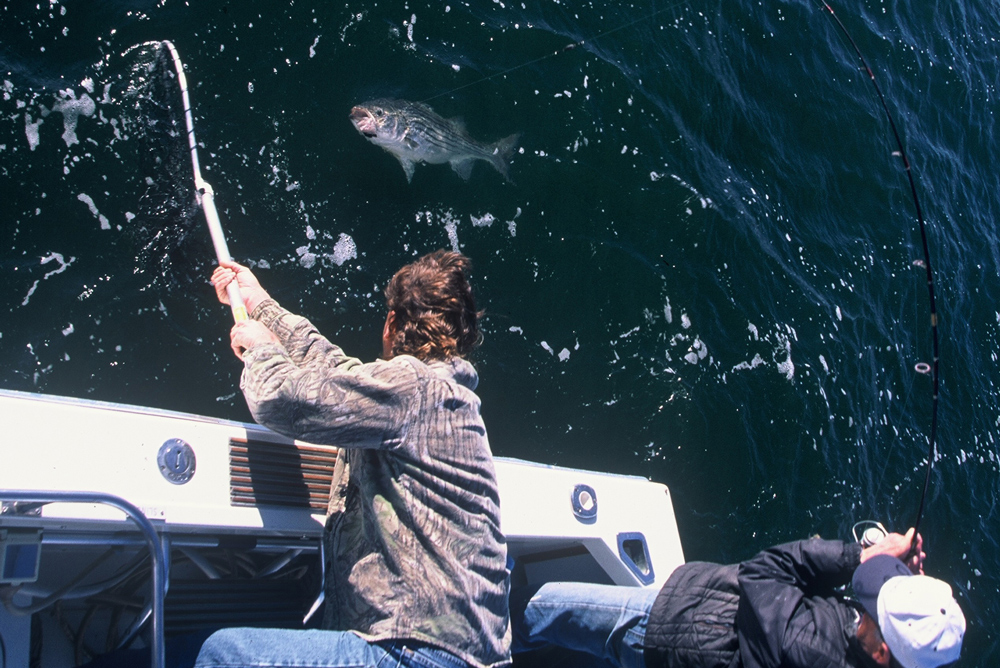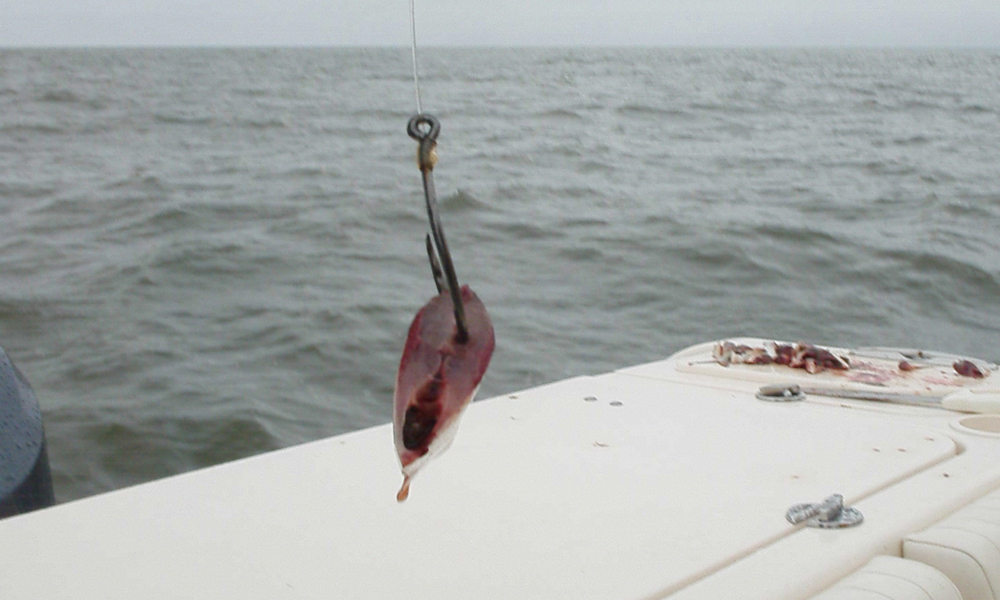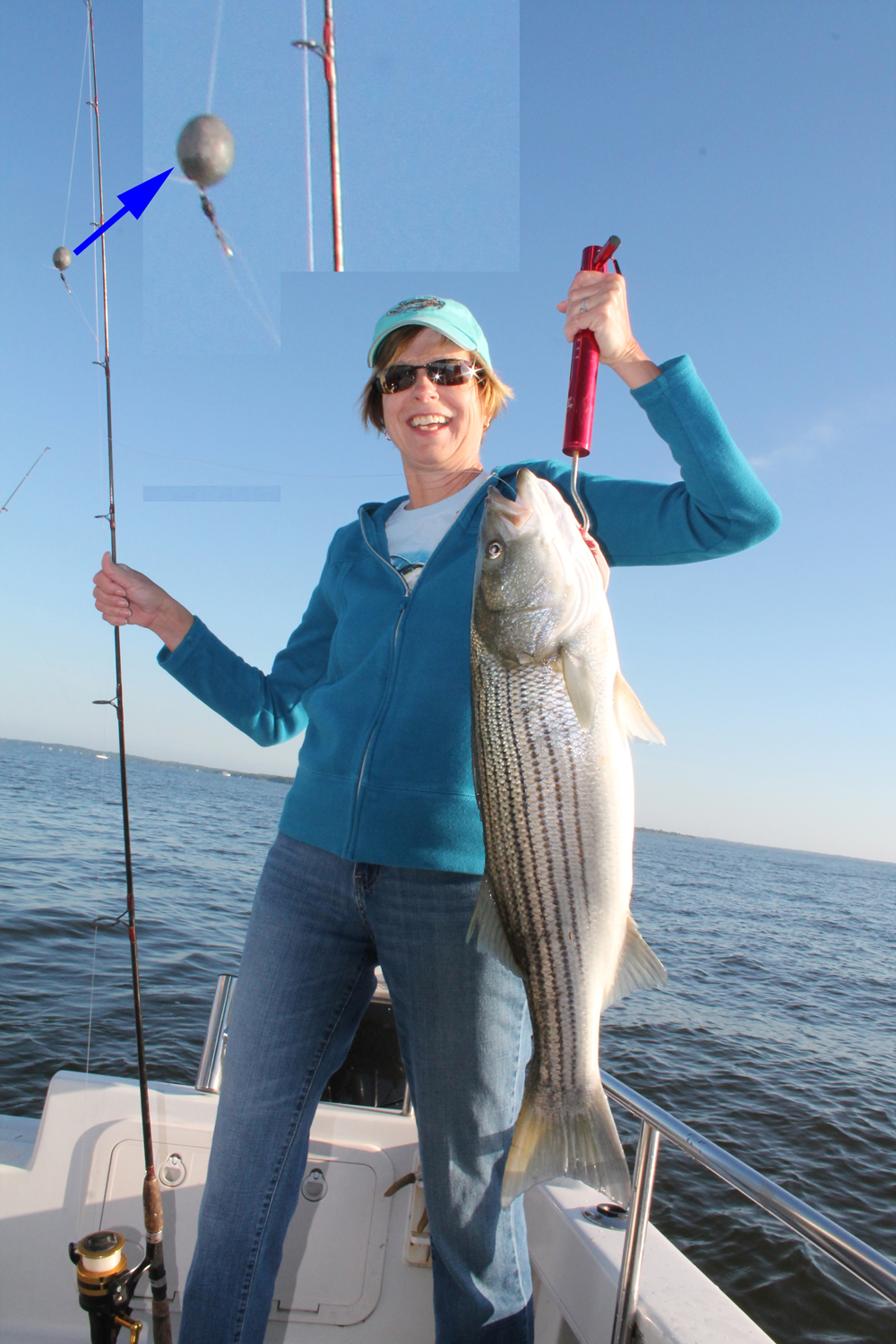Anglers with years of Chesapeake Bay fishing experience know that as water temperatures plummet and our summertime species disappear from the Bay's waters, there’s an excellent chance that chumming will remain a top tactic for filling the cooler. This is the time of year when stripers put on the feed bag and do their best to fatten up for the winter. They’re schooled, no longer stressed by high temperatures, and feel the urge to feed as much as possible. The most effective fall chummers, however, will modify their tactics to match the season.

Where to Chum
Savvy fall chummers will look for areas with hard structure, usually in the form of drop-offs, humps, or ledges. Places like Love Point, The Hill, and the Middle Grounds are all good examples. Naturally, we’d recommend keeping up with the FishTalk weekly fishing reports, to get an idea of what general areas the fish have been in. Then, when you approach a particular spot, prior to dropping anchor motor back and forth across the drop-offs and edges a few times. Pay close attention to your fishfinder to get a feel for what depth the fish are holding in, before you commit to a spot.
After setting the anchor if your boat isn’t in the specific depth range you were shooting for, don’t be complacent. Yank it right back up, and make another attempt at putting that boat into the prime position. And if you arrive to find a crowd at your favorite spot, don’t just anchor in the middle of the pack or take the first open place. Again, motor around and look for the fish. Also pay attention to the current. If there’s a pack of boats pouring chum into the water, it makes a heck of a lot more sense to anchor on their down-current side than on their up-current side.
Tackle and Fishing Gear for Chumming
Tackle choice is personal and whether you like spinning or conventional gear, either will do the trick. That said, those using spinning gear will find Baitrunner-style reels, which allow you to drop the rod into the holder and click the reel into freespool, a major advantage. Most people would say that 15-pound class gear is about right for fall chumming, and remember that using monofilament is advantageous with this type of fishing since it reduces sensitivity – thus making it harder for the fish to feel tension on the initial take. Added bonus: its stretchy properties mean it comes completely taunt more slowly than braid, which is ideal when using (now mandated) circle hooks because quickly applying tension can jerk the hook right out of the fish’s mouth.
Three or four feet of 30 pound test leader terminating in a loop at one end and an 8/0 circle hook at the other is about right, though we note that circle hooks are often measured differently by different companies and going strictly by the numbers can be problematic; some judgement and common sense has to be applied.
Rig your main line through an egg sinker, then tie on a swivel and clip it to the loop-end of the leader. Different rods on your boat should have staggered sinker weights, so they drift back different distances behind the boat. Start with a half-ounce, then rig the next line with one ounce, and so on.
As far as the chum goes, some people like logs or blocks, while others like buckets. We fall firmly into the bucket camp, because logs and blocks require mesh bags which rip, are nearly impossible to clean, and can get snagged on your hooks. With a plastic one-gallon bucket, however, you can cut quarter-sized holes in the plastic, fish with it, and then save it for next time and you’ll have a pre-cut chum bucket ready to go. Note: when using this method always cut a hole in the top of the bucket and tie it on, or the top can pop off and float away in rough seas.
A hard-frozen one-gallon bucket will last between two and four hours depending on water temperature and sea conditions. Shorten the line and keep the bucket dancing near the surface to throw chum as liberally as possible, or lengthen the line and allow the bucket to sink below the surface, dampening the effect of the waves, to make it last longer.
Chumming How-to
With your boat anchored up and your chum deployed, you simply drop down baits and wait, right? Not hardly. First off, let’s talk about those baits a bit. In the spring huge fist-sized chunks are best but during the fall, domino-sized pieces seem to work much better. And they’ll draw even more strikes if you thread the guts of a bunker onto the hook, before adding a chunk of fish. Stripers love bunker guts. But make sure your hook pierces the one firm nugget inside the gut-ball or it’ll wash right off.
Okay – now we’re ready? Not so fast. Before you set any baits check each hook to make sure the point is completely exposed and the meat is affixed in such a way that it won’t spin or double-back on the hook point. With circle hooks, if that point isn’t thoroughly exposed it’ll slide right out of the fish’s mouth without ever grabbing the jaw.

Now, we’re finally ready to deploy the lines. Stagger them behind the boat, make sure at least one is at mid-depth, and another has no weight at all. Unlike chumming earlier in the season, when most of your keepers come off the bottom, in the fall you may catch large fish from anywhere in the water column. Once the lines are out, put the rods in the holders and don’t touch ‘em until they bend over. Holding the rod is the kiss of death when using circle hooks, as few of us are controlled enough to resist jerking on the line when a fish grabs the bait.
One exception: you should have at least one line with no weight, and this one is best fished by dropping it into the water right next to the chum bucket, then opening the bail or going into freespool and allowing it to sink naturally with the chum. Drift it back 100 feet or so, then reel it in and try again. When a fish grabs it, use every iota of your self-control to avoid setting the hook. Instead, apply pressure as slowly and gently as possible to let that circle hook work its magic.

Want more info on chumming? also check out: